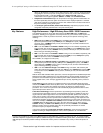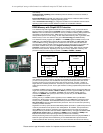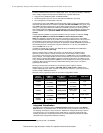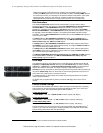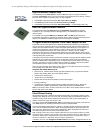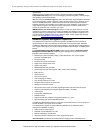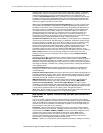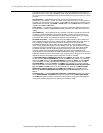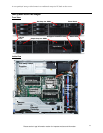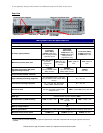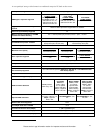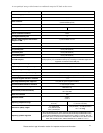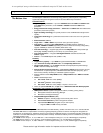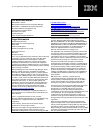
A cost-optimized storage-rich alternative to traditional enterprise 2U dual-socket servers
Please see the Legal Information section for important notices and information.
12
to a System x server is one of the most effective ways to increase application performance. For
best performance in a server with a 4-core processor, there should be twice as much memory as
for a 2-core processor. A 6-core processor should have three times as much memory as a 2-core
processor.
Hard Disk Drives — IBM hard disk drives help you improve the transaction and cost
performance of your System x servers. The choice of hard disk drives can be a critical aspect of
maximizing the I/O throughput of the system. 3.5-inch SAS hard disk drives are available for the
x3620 M3 with capacities of up to 600GB at 15,000 RPMs. 3.5-inch SATA HDDs are available in
capacities up to 2TB at 7,200 RPMs.
Power Supply — The optional second power supply for the x3620 M3 enables redundancy for
hot-swap power. In addition, its 92%-efficient design helps lower your energy bill for power and
cooling.
Virtual Media Key — The x3620 M3 includes a plethora of systems management features built-
in; however, sometimes additional management capability is needed. In those situations, the
Virtual Media Key not only offers powerful new features, it does so without taking up a valuable
PCIe adapter slot, instead using a dedicated connector on the motherboard.
ServeRAID Controllers — System x servers using ServeRAID technology allow companies to
build a reliable foundation for business-critical computing. IBM ServeRAID technology allows an
array consisting of multiple physical hard disk drives to be treated as one logical drive.
ServeRAID technology also allows data to be stored redundantly, across multiple hard disk
drives—enhancing both the integrity and the availability of the data. SAS and SATA ServeRAID
controllers offer enhanced performance due to onboard processors and cache. Because IBM
ServeRAID controllers can help significantly improve data transfer rates, this technology is
extremely effective when implementing demanding, transaction-oriented applications. By
employing the advanced fault tolerance of IBM ServeRAID technology, companies can effectively
implement networked business systems that require large amounts of storage space for data and
applications that must be available for their businesses to continue operating.
The ServeRAID-BR10il v2 SAS/SATA Controller offers RAID-0/1/1E support, with up to 3Gbps
per SAS port. The IBM ServeRAID-M1015, x8 PCIe and 6Gbps, offers RAID-0/1/10; optionally
RAID-5 with SED support. The IBM ServeRAID-M5014, x8 PCIe and 6Gbps, provides 256MB
cache and RAID-0/1/10/5/50; optionally RAID-6/60 with SED, and battery backup). The IBM
ServeRAID-M5015, x8 PCIe and 6Gbps, has 512MB cache and RAID-0/1/10/5/50; optionally
RAID-6/60 with SED, and battery backup. The IBM ServeRAID M1000 Series Advance Feature
Key adds RAID-5 and SED support to the ServeRAID-M1015. Similarly, the IBM ServeRAID
M5000 Series Advance Feature Key adds RAID-6/60 with SED support to the M5014 and
M5015. The IBM ServeRAID M5000 Series Battery Key adds battery backup support to the
M5014.
External Storage — The IBM System Storage EXP810 and EXP3000 expansion units, as well
as the DS3000, DS4000, and DS8000 series storage subsystems and N3000, N5000, N6000,
and N7000 NAS systems comprise a powerful and broad shared storage family with integrated
management software designed to meet midrange and enterprise needs.



